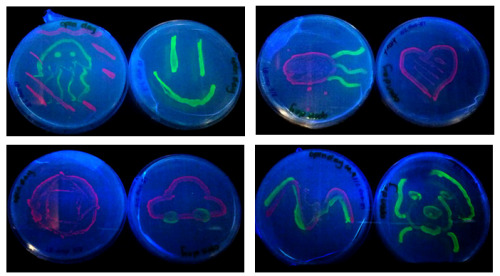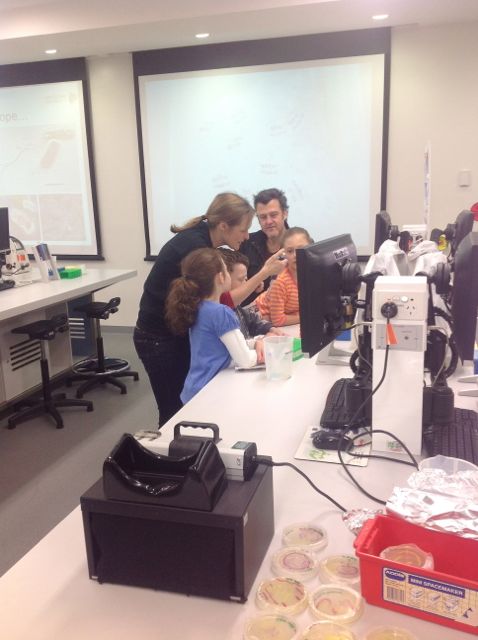Team:Macquarie Australia/Openday
From 2012.igem.org
Open Day
The Macquarie University Open Day on September 8 gave us an excellent opportunity to raise awareness of our project in the wider community. To take advantage of this, we developed an interactive exhibit where members of the public could learn about what we are seeking to do. We also aimed to challenge any negative connotations held by members of the public about synthetic biology and gene cloning, and the applications of these techniques.
We identified three main groups who would be our likely audience:
1. Senior high school students who were considering Macquarie University for tertiary study;
2. Parents and adult members of the public who were accompanying their children or considering postgraduate study;
3. Younger children who were accompanying family members.
In order to communicate effectively with each of these groups, we coordinated a range of activities that served to educate our audience about the field of synthetic biology and our project in particular.
Miguel Sanjurjo, a visiting foreign exchange student and member of the team, was excited about the concept of open day. Miguel perfectly captured the team's mentality towards the open day,
“As a foreign student, the Open Day has constituted for me an exciting, enriching experience; it has allowed us to bring the world of synthetic biology, genetics and molecular biology to the general public using simple concepts and showing real applications representing the daily work of many researchers, and in the other hand, share the spirit of collaboration and our experience as a team of the iGEM competition. It is a great satisfaction to see the community showing interest and learning about some fields of science that are usually far from general knowledge and shrouded in mystery and that progress of research can be recognized. I would totally recommend to export this type of outreach to my own country”
The Lego of Life
We included a station where younger children (or anyone who was interested!) could explore the concept of genes using Lego® blocks. This activity compared genes to Lego® bricks, and a poster (as shown below) explained that the infinite possible combinations that can be produced from a collection of these pieces can be viewed as a model for the infinite combinations of genetic information that are possible in nature and in synthetic biology.

Micropipette practice
We set up laboratory workspaces where secondary students and adults could learn and practice the use of micropipettes. Here we used instructional posters (as shown below) as well as ensuring that a member of our team was present at this station at all times to communicate the relevant safety information and to assist with the use of the pipettes.

E. coli viewing
Light microscopes were set up where people were able to view E. coli cells in solution. Posters were included at this station to present information about these cells and their uses in synthetic biology, and our project in particular (as shown below).

Information posters
Posters were provided that outlined the fundamental principles of synthetic biology and how we are employing these in our project (as shown below).

Fluorescent plates
We supplied plates that demonstrated successful examples of gene cloning using fluorescent proteins. These provided an effective link to our project as well as allowing our audience to come into contact with a harmless (and fun!) example of gene cloning. Members of our team were present to explain how the plates had been produced and how the techniques and products of this process can be applied to “real-world” situations.

Gallery







 "
"




